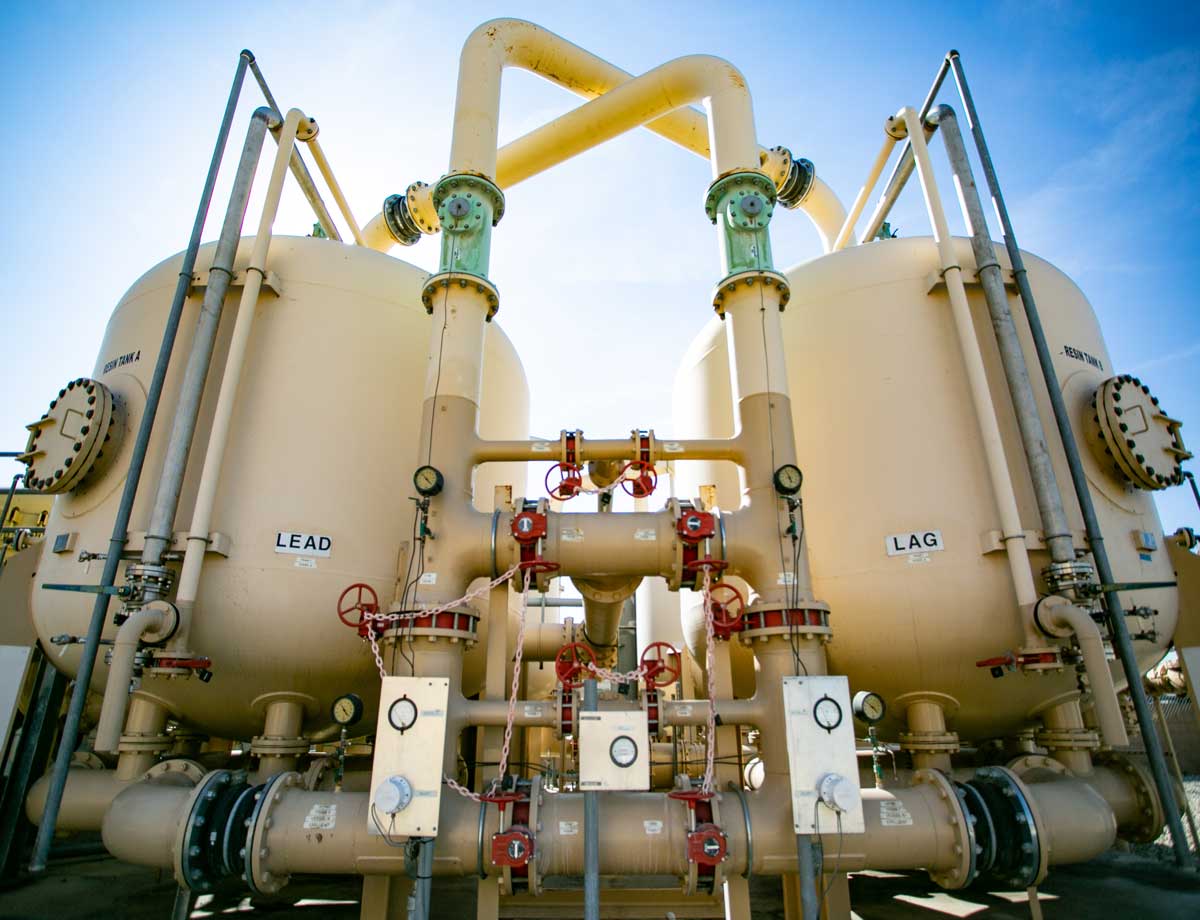Water Treatment

Since 1924 the District has relied on its wellfield located on Puente Avenue in the City of Baldwin Park as its primary source of providing pure and wholesome drinking water to our customers. In 1991, contamination levels of volatile organic compounds (VOCs) in the wellfield began to exceed the maximum contamination levels set by the California Department of Public Health (CDPH). The District took prompt action and in 1992, installed a 1,500-gpm air stripping facility to remove VOC’s. As a result of the continued migration of the contamination, the District installed an additional 1,500-gpm air stripping facility in 1995; the cost to install these facilities was over one million dollars.
Beginning in June 1997, several new chemicals not previously identified as a concern were discovered at the District wellfield. These chemicals are perchlorate, NDMA and 1,4-dioxane. Upon their discovery, the District took immediate action by removing these wells from service and purchasing water from adjoining water agencies at a great expense. At that time no proven treatment technology existed for the removal of these new chemicals from drinking water. In the summer of 1998, the District issued a nationwide request for proposal to find a treatment technology capable of treating these chemicals. In the fall of 1998, the District received a proposal from Calgon Carbon Corporation with performance-based assurances that these chemicals could be successfully removed. The Main San Gabriel Basin Watermaster, San Gabriel Basin Water Quality Authority, and Upper San Gabriel Valley Municipal Water District funded the five million dollar project. On January 12, 2000, the funding agencies received reimbursement for the capital costs of this project from the parties responsible for the contamination. Construction began on the project during June 1999 and was completed in February 2000.
The District’s groundwater clean-up facilities consist of three wells located on Puente Avenue in the City of Baldwin Park, two parallel air stripping towers, one ion exchange system, one hydrogen peroxide injection system, two ultraviolet light reactors operating in series and a booster pump station. After treatment, the water is piped to the District’s Hudson Booster Station located in the City of La Puente and pumped into the District’s water system. The water is closely monitored and tested to assure that the water delivered to the public complies with all Federal and State drinking water regulations. The Treatment Plant has a capacity of 2,500 gallons per minute. This meets 100 percent of the District’s water needs.



